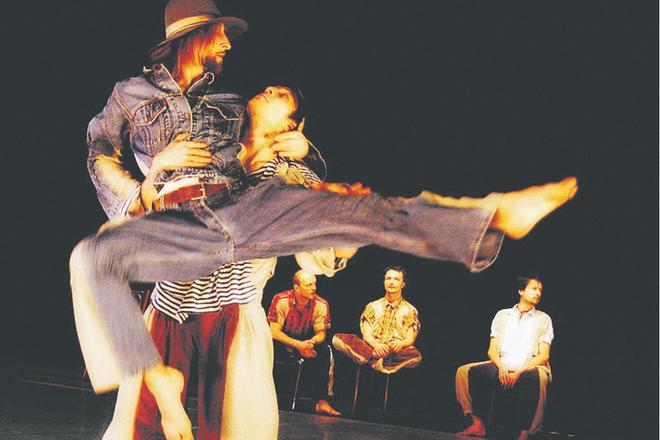BELGIUM has been hailed as a ‘Mecca for dance’ by a group of five Slovak dancers who currently work and perform there. They study, dance, work and give workshops individually, but cooperate under the name Les SlovaKs. They have created two pieces, Opening Night (premiered in 2007), and Journey Home (premiered in 2009).
Milan Herich, Peter Jaško, Anton Lachký, Milan Tomášik and Martin Kilvády performed the latter piece at last year’s Bratislava v pohybe (Bratislava in Movement) dance festival, giving the title a special meaning. The piece, which was timed to be the highlight of the autumn festival, is characterised by the use of Slovak folk dance and polyphonic singing, and draws on Slovak mentality and humour.
“Belgium is a mecca for contemporary dance; it has 30 years of tradition with big, artistically strong companies – Rosas, Ultima Vez, Jan Fabre, Les Ballet C. de la B., Sidi Larbi Cherkaoui, etc. – who make their presence felt not just in their home country, but across the whole world,” Tomášik told The Slovak Spectator when asked how he and other Slovak dancers had strayed so far across Europe. “We auditioned for the famous school in Brussels called P.A.R.T.S. and since then we have stayed there: to live and to create.”
Les SlovaKs started to dance together with no rules, and developed the practice of “full and open dancing”, which means not excluding any aesthetic of movement possibilities, and adding self-awareness and a fully committed level of performance, trying to be observer and participant at the same time.
They have developed what they call “new traditional dance”, a way of playing with their shared history and personal friendship, while also maintaining individual particularities and developing this into a kind of social dance.
Asked what brings them home, Tomášik answered that it is mainly family and friends, but sometimes also performances. No event is planned for 2012, but they hope to come to Slovakia late next year with their new piece, due to be premiered this November in Germany.
They also occasionally give workshops and Tomášik recently made a choreography for the Divadlo štúdio tanca dance theatre and company in Banská Bystrica, called Veselosti minulosti.
“In Slovakia, it is mostly the younger generation who come to watch contemporary dance, especially in smaller towns,” Tomášik concluded. “Older people are not much used to going to the theatre in general. In Belgium, the audiences are mixed and in smaller towns you see quite the opposite: the majority are elderly people.”



 JourneyHomeby Les SlovaKs (source: Sandrine Penda)
JourneyHomeby Les SlovaKs (source: Sandrine Penda)